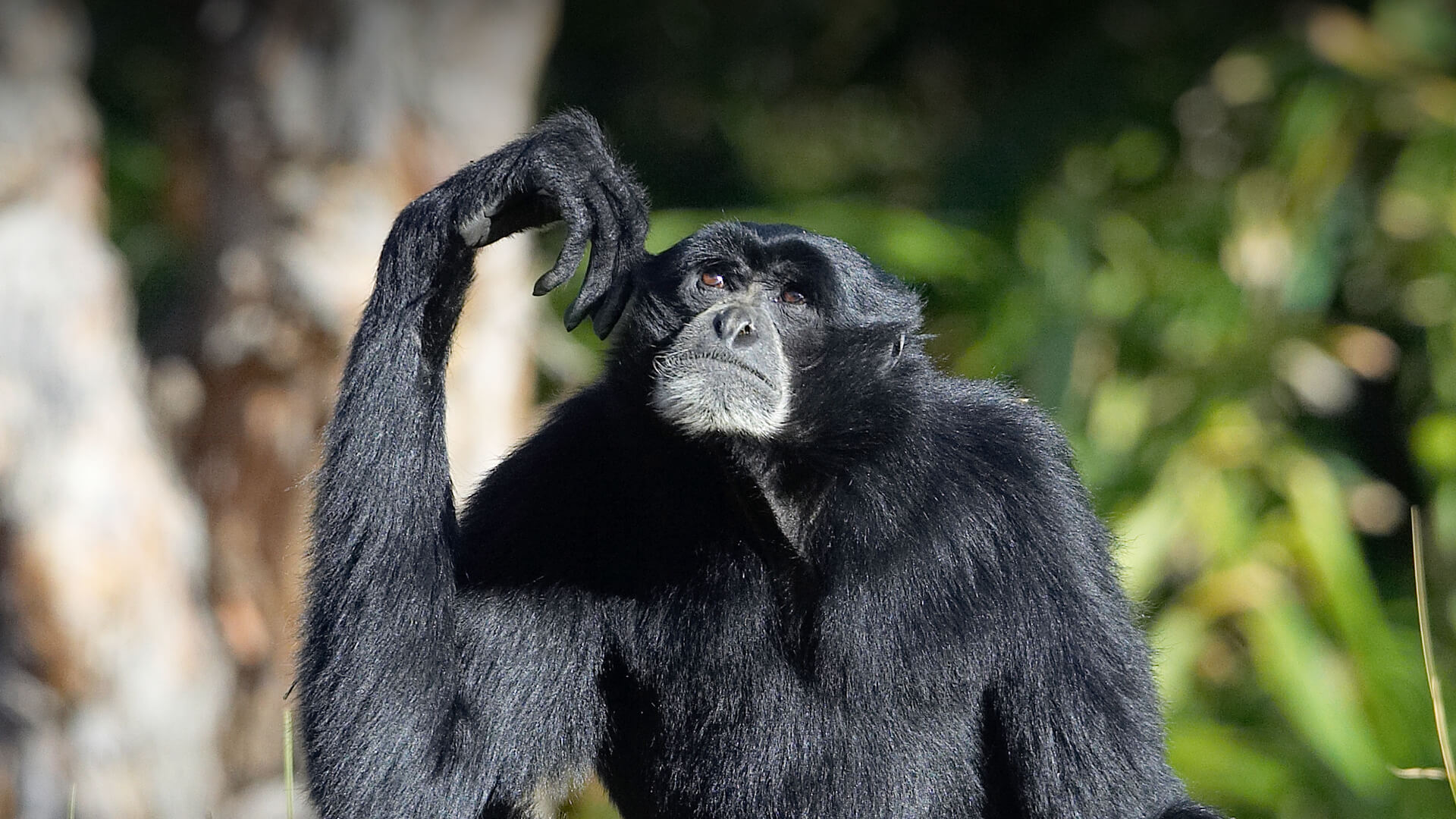The Fascinating World of Syndactylus: Unraveling its Secrets
– Sumatran siamangs (Symphalangus syndactylus) are found in the Barisan Mountains of Sumatra and the mountains of the Malay Peninsula.
– They inhabit lowland, hill, and upper dipterocarp forests.
– Siamangs are the largest gibbons, weighing between 10 and 12 kg.
– Siamangs have a black fur coat, long arms, and a short-muzzled face.
– Siamangs have opposable thumbs and fused 2nd and 3rd toes.
– Siamangs are monogamous and highly territorial.
– Females give birth every 2 to 3 years, usually to one offspring, but twins can occur.
– Infants are weaned at 18 to 24 months and reach maturity at 6 to 7 years.
– Siamangs communicate through vocalizations, including bell-like tones, high yells, and high-pitched laughter.
– Territory size varies depending on food supply, averaging 28 to 95 acres.
– Siamangs primarily survive on leaves and fruit but also eat insects, bird eggs, and small vertebrates.
– Siamangs play a crucial role as seed dispersers in ecosystems.
– They have economic importance to humans as pets, subjects of primate studies, and for entertainment purposes in zoos.
– Siamang gibbons communicate through calls and songs to establish territory and reinforce family or mating bonds.
– Siamangs are the only gibbons with both opposable thumbs and opposable toes.
– They play a crucial role in their forest habitat by eating fruits from one tree and spreading seeds through their feces, leading to the growth of more trees elsewhere and a healthier tree population.
